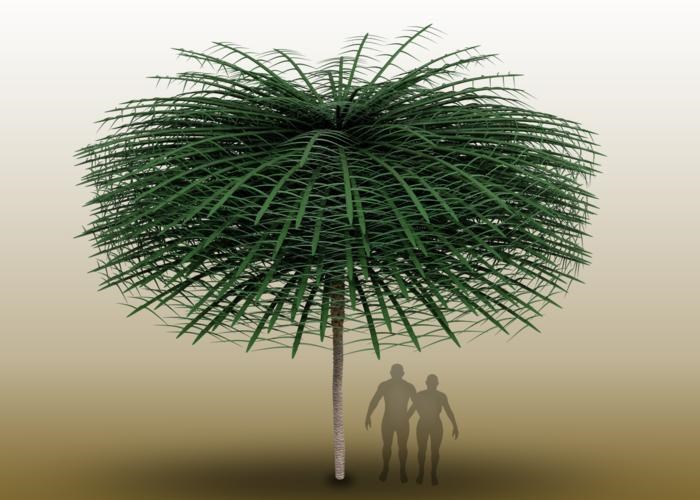
FREDERICTON – A mysterious fossil unearthed seven years ago in a New Brunswick quarry has revealed an extinct tree with a narrow trunk and a ball-shaped crown, a remnant of an era before the dinosaurs.
An article published last week in the journal Current Biology opens a window into the plant world of the Carboniferous, when New Brunswick was a tropical land lying 10 degrees from the equator.
Matt Stimson, one of the study's authors, who works at the New Brunswick Museum in Saint John, confirmed that the plant dates back to a time of change when plants and animals began to adapt and diversify on Earth.
The tree was a “failed evolutionary experiment” and did not survive, but he acknowledged that the discovery helps researchers understand the complexity of forests. He added that finding an intact fossilized tree is unusual.
“It's very rare — so rare, only a few have been discovered in the entire fossil record,” he said. Not only at this time, but at any time in geological time, the trunk, branches, and leaves are joined and perfect.
The fossil was discovered in 2017 in a quarry in Norton, New Brunswick, about 80 kilometers southeast of Fredericton.
Mr. Stimson said he was doing summer fieldwork with Olivia King, a graduate student at Saint Mary's University, when they saw a large stone that appeared to have changed color and began gently digging around it. Then the more than 300 million-year-old fossil preserved in a two-ton rock began to reveal itself: a spiral formation of leaves attached to the stem.
He said the tree, which he named Sanfordiacaulis densifolia after the quarry where it was found, had a flexible trunk 16cm in diameter, three meters high, and a “bottle brush”-shaped canopy of 250 leaves, each about 1.75 feet long. meter.
“They looked like giant ferns or very strange trees that looked like Dr. Seuss trees, very different from anything that exists today,” he said, referring to the book's author's illustrations of the adorable children.
“The branches or leaves emerge directly from the trunk and form a spiral pattern that emerges horizontally from the trunk in a very dense manner.”
The researcher explained that this structure allowed the tree to capture as much sunlight as possible after it passed through the upper and middle canopies of the forest, reaching ground level where there were smaller plants resembling shrubs in size.
He said that this plant tells us what the forest was like at that time. There are not many plant fossils from this period. He added that although the plant was a failed attempt by Mother Nature, those that survived were the ancestors of today's forests, but in a completely different form. For example, coelophytes were up to 30 meters tall in the Early Carboniferous, but are now only a few centimeters tall.
“These early forests provided shelter and refuge for early amphibians that moved from water to land. You certainly wouldn't want to swim in these waters,” Mr Stimson warned. “There were giant sea scorpions, very large toothy fish, centipedes and other types of insects beginning to crawl around.” On the ground.






